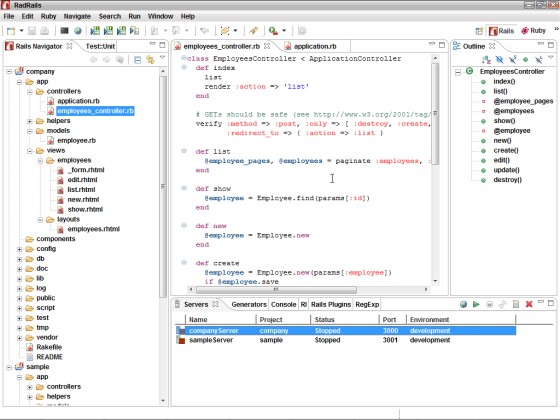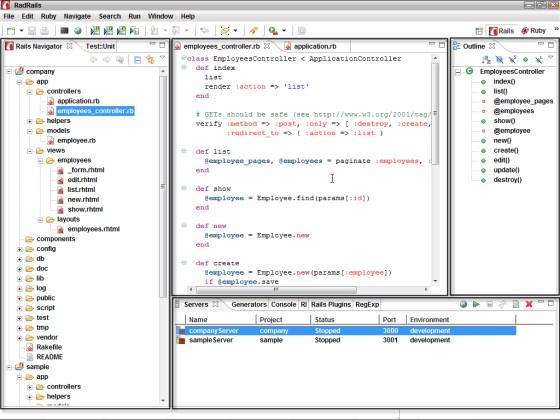Chapter 4. Using RadRails
In This Chapter
Navigating the RadRails workbench
Performing common tasks
Heading off trouble (if trouble occurs)
RadRails is an integrated development environment (IDE) for Ruby on Rails. In the name RadRails, the Rad stands for “Rapid application development” (and, of course, Rails stands for “Rails”). RadRails is based on the Eclipse platform — an open source effort that forms the basis for many IDEs.
Words, Words, Words
In many of this book's examples, I ask you to do this‐or‐that by using RadRails. So to make things easy for you (well, for me, actually), I start by establishing some RadRails terminology. Some of this terminology is familiar stuff for you. Some other terminology might be new.
Workbench: The RadRails desktop. (See Figure 4-1 .) The workbench is the environment in which you develop code.

Figure 4.1. Figure 4-1: The RadRails workbench often looks like this (but not always).
Area: A section of the workbench. The workbench in Figure 4-1 has four areas. (See Figure 4-1 .)

Figure 4.2. Figure 4-2: The workbench is divided into areas.
View: A part of the workbench that displays information for you to browse and modify. A view can fill up an area in the workbench. For instance, in Figure 4-1 , the Outline view fills up the rightmost area. Also in Figure ...
Get Ruby on Rails For Dummies® now with the O’Reilly learning platform.
O’Reilly members experience books, live events, courses curated by job role, and more from O’Reilly and nearly 200 top publishers.

